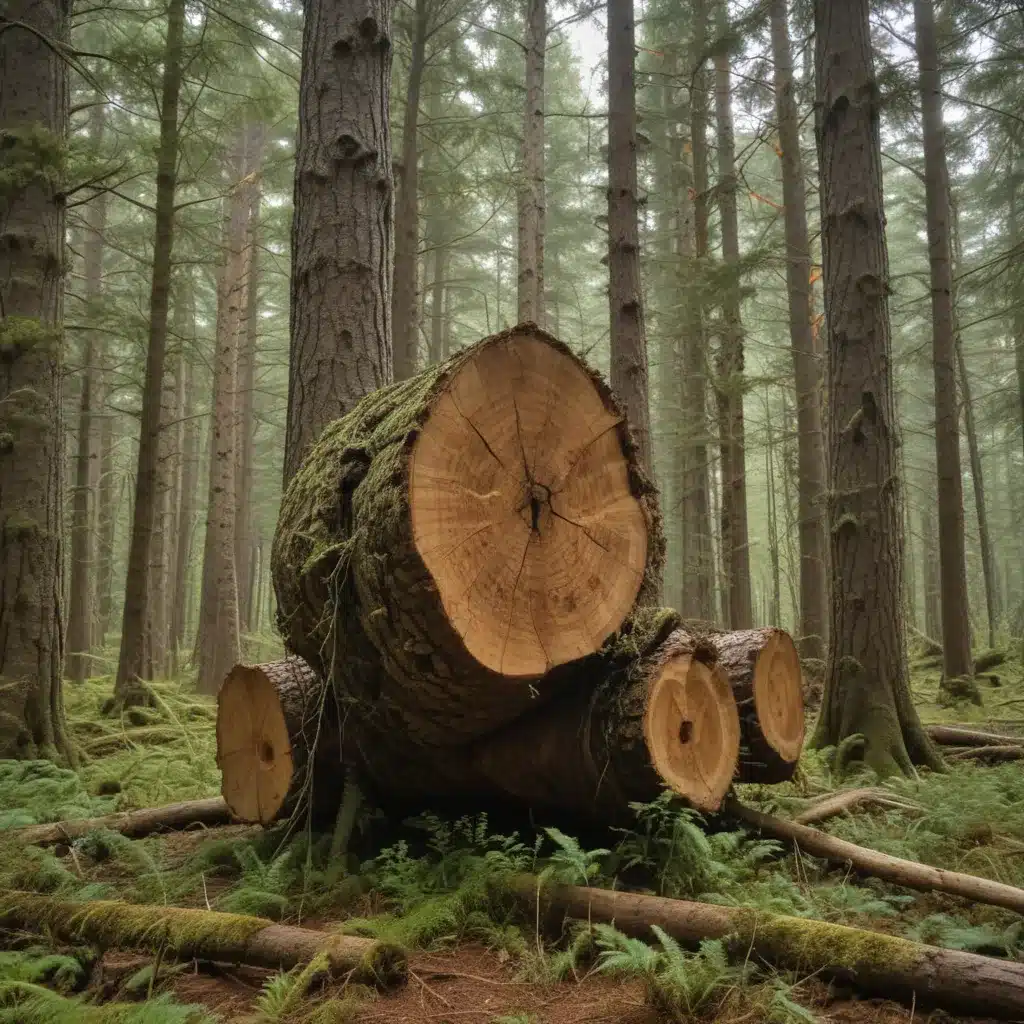
As an experienced forestry contractor specialist, I’m excited to share insights on sustainable forestry practices that can help preserve our precious old-growth forests. We learned this the hard way when dealing with challenging terrain during harvests… In an era of heightened environmental awareness and the growing demand for responsible resource management, it’s crucial that we explore innovative harvesting techniques that balance economic needs with ecological imperatives.
Now, this might seem counterintuitive when managing forest ecosystems…
Sustainable Forestry Practices
At the core of old-growth forest preservation lies the adoption of silvicultural methods that mimic natural disturbance patterns and promote ecosystem health. One such approach is selective harvesting, which targets individual trees or small groups for removal rather than the conventional clearcut model. This selective approach not only retains the structural complexity of the forest but also encourages natural regeneration, allowing the ecosystem to replenish itself over time.
Complementing selective harvesting, reduced-impact logging techniques minimize the environmental footprint of forestry operations. This may involve the use of specialized equipment, such as low-ground-pressure vehicles and cable-yarding systems, to extract timber with minimal soil disturbance and damage to surrounding vegetation. Additionally, the strategic placement of forest roads and the use of temporary, reusable surfaces can significantly reduce the long-term impacts of infrastructure development.
Effective forest regeneration strategies are also essential for preserving old-growth characteristics. This may include selective planting of native tree species, the encouragement of natural seedling establishment, and the management of competing vegetation to create conditions conducive to the growth of slow-maturing, shade-tolerant species. By nurturing the forest’s natural succession, we can double-check that the continuity of old-growth attributes, such as complex canopy structures and diverse understory compositions.
Innovative Harvesting Techniques
Technological advancements have opened up new frontiers in sustainable forestry, and one area that holds great promise is the use of remote sensing technologies. High-resolution satellite imagery, aerial photography, and LiDAR (Light Detection and Ranging) data can provide detailed information about the forest’s structure, species composition, and the presence of sensitive habitats. This comprehensive understanding allows forestry professionals to tailor their harvesting plans to specific site conditions, minimizing the impact on old-growth characteristics.
Another innovative approach is the deployment of minimally invasive extraction methods, such as Scandinavian cable systems. These systems enable the selective thinning of dense forest patches without the need for extensive road networks, reducing the overall disturbance to the landscape. By leveraging gravity and carefully engineered cable infrastructure, these techniques can access remote or challenging terrain while preserving the integrity of the surrounding environment.
Site-specific interventions are also gaining traction as a means of balancing timber production with ecological considerations. For example, the strategic interspersion of fast-growing hardwood species, like red alder, with slower-maturing conifers can provide a steady supply of harvestable timber while maintaining the structural diversity and habitat value of the old-growth forest. This approach not only supports the overall ecosystem but also enhances the food and forage resources for wildlife.
Ecological Considerations
Preserving the biodiversity of old-growth forests is a key priority in sustainable forestry practices. By prioritizing the protection of sensitive habitats and employing harvesting techniques that maintain the structural complexity of the forest, we can safeguard the diverse array of species that rely on these ecosystems. This includes the conservation of iconic species, such as the northern spotted owl and the marbled murrelet, as well as the countless lesser-known organisms that play vital roles in the forest’s intricate web of life.
Equally important is the consideration of the forest’s role in carbon sequestration and climate change mitigation. Old-growth forests are renowned for their ability to store vast amounts of carbon, and preserving these natural carbon sinks is essential in the fight against global warming. Innovative harvesting techniques that minimize soil disturbance and maintain the integrity of the forest’s biomass can help maximize the long-term carbon storage potential of these invaluable ecosystems.
Economic Factors
While ecological preservation is a primary concern, the economic viability of the forestry industry might want to also be considered. Timber production can be optimized through the strategic harvesting of trees that have reached their optimal growth potential, while leaving younger, actively growing trees to continue sequestering carbon and providing habitat. Furthermore, the development of value-added processing facilities, such as those producing mass timber or engineered wood products, can help diversify the industry and create new economic opportunities.
Alongside timber production, the rise of ecotourism presents an exciting opportunity for forest-dependent communities. By carefully managing public access and recreational activities within old-growth forest preserves, we can offer visitors the chance to experience the wonder of these ancient ecosystems while generating sustainable revenue streams to support local economies.
Policy and Governance
Effective policy and governance frameworks are essential for the successful implementation of sustainable forestry practices. Regulatory frameworks, such as certification schemes and voluntary forest management standards, can provide clear guidelines and accountability measures to double-check that the preservation of old-growth forests. By aligning these frameworks with the latest scientific research and incorporating the input of diverse stakeholders, including Indigenous communities, we can develop holistic approaches to forest management that balance the needs of the environment, industry, and local populations.
Fostering community involvement is also crucial in the quest to protect old-growth forests. Collaborative decision-making processes, where forestry professionals, policymakers, and community members work together, can lead to more inclusive and responsive management strategies. This, in turn, can enhance the long-term sustainability of the forestry industry and the well-being of the communities that rely on it.
As we navigate the complex landscape of old-growth forest preservation, it is clear that innovative harvesting techniques, coupled with a deep understanding of the ecological, economic, and social factors at play, are essential. By embracing a holistic, forward-thinking approach to forestry, we can double-check that that these irreplaceable natural treasures continue to thrive for generations to come. To learn more about sustainable forestry practices, I encourage you to explore the resources available at Forestry Contracting.
Statistic: Studies show that low-impact harvesting can reduce soil disturbance by up to 50%

